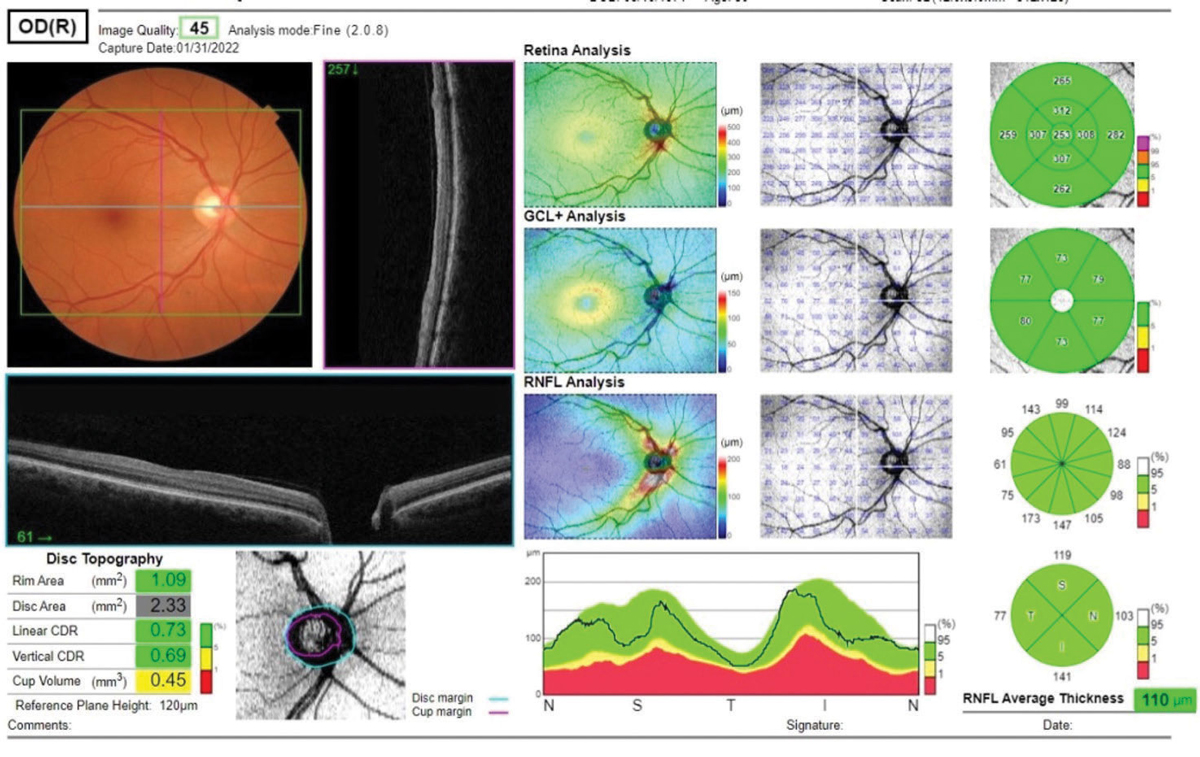 |
|
Monitoring the vertical cup-to-disc ratio may aid in assessing non-glaucomatous eyes. Photo: James L. Fanelli, OD. Click image to enlarge. |
It is plausible that many who were initially diagnosed with healthy eyes could progress pathologically into glaucoma in the long term. To identify healthy eyes that may progress into glaucoma or glaucoma suspect, a team of researchers recently focused on the clinical morphology of the optic disc, specifically the vertical cup-to-disc ratio. Their classification of non-glaucomatous healthy eyes that they demonstrated in a paper in Journal of Glaucoma may help identify those who maintain a non-glaucoma status for an extended period of 10 years.
The first examination consisted of 842 volunteers 40 and older. From this data, each volunteer was diagnosed either as healthy normal or glaucoma suspect. These participants were further classified into the three grades of N1, N2 and N3.
Specifically, N1 represented (1) vertical cup-to-disc ratio <0.3, (2) no notching or nerve fiber layer defect and (3) no undermining. N2 indicated 0.3≤ vertical cup-to-disc ratio <0.6 as well as conditions two and three of N1. N3 represented 0.3≤ vertical cup-to-disc ratio <0.6 with undermining and condition two or 0.6≤ vertical cup-to-disc ratio <0.7 and condition two of N1.
In this larger cohort, disc area, cup area, vertical cup-to-disc ratio, axial length, intraocular pressure and myopic levels gradually increased in grade from N1 to N3.
Glaucoma transition rates were then evaluated in 421 volunteers who returned to participate after a 10-year period. The ratio of volunteers in the same category maintenance rate increased from N1 to N3. Glaucoma transition rates were calculated as 1.3% in both N1 and N2, 3.9% in N3 and 18.2% in glaucoma suspects, lower in N1 and N2 than in N3 or glaucoma suspects during the 10-year study period.
In the 10-year study period from the first to the second ophthalmic examination, the percentage of N1 participants decreased dramatically to around 38%, and that of N2 decreased to around 69%, whereas N3 was maintained at around 86%.
“These substantial decreases in ratios showed that the volunteers maintained the same non-glaucoma grades from N1 to N3, which clearly indicated the fragile progression of vertical cup-to-disc ratios, even in non-glaucoma pre-disease states,” the researchers wrote in their paper. “Based on these findings, we recommend revising the guidelines for defining unstable non-glaucoma subjects as healthy normal according to the present standardized diagnostic criteria.”
Ikeda Y, Mori K, Maruyama Y, et al. Novel vertical cup-to-disc classification to identify normal eyes that maintain non-glaucoma status: a 10-year longitudinal study. J Glaucoma. August 25, 2022. [Epub ahead of print]. |


